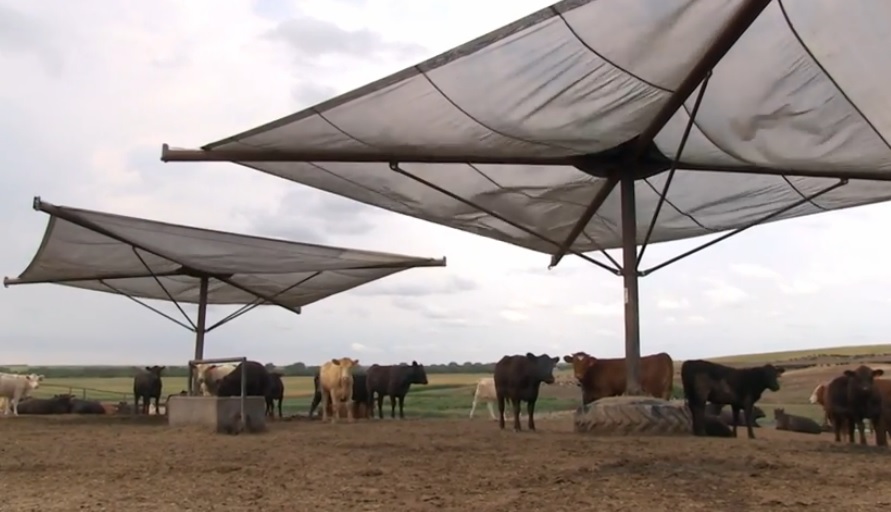
Agricultural News
Cattle Feeders Should Plan Now for Summer Heat
Tue, 14 Apr 2015 14:26:21 CDT
 Hot. Humid. Still. Those weather conditions cause stress in the feedlot for the animals, and the managers. Anne Burkholder of the Will Feed near Cozad, Nebraska said that combination of factors are concerning.
Hot. Humid. Still. Those weather conditions cause stress in the feedlot for the animals, and the managers. Anne Burkholder of the Will Feed near Cozad, Nebraska said that combination of factors are concerning.
"Heat stress is something we worry about a lot, but we don't deal with very often," Burkholder said.
A little planning now can help cattle feeders deal with those days later this year, says retired University of Nebraska Beef Extension specialist Terry Mader. He developed "best practices" to guide strategies for those few problem days that may come.
"If we are going to maximize the genetic potential for these animals, whether it's for performance or for carcass traits we really need to make sure that the animal is comfortable and content, and to do that we have to manage the environmental stress, so these mitigation strategies are designed to do that," Mader said.
The suggestions, available in the "Educator's Corner" at C-A-B-partners-dot-com, help producers recognize the signs of, and conditions that typically cause heat stress. They also provide options for helping the animals through those days.
"If the nighttime temperatures get below 70 they can cool themselves off enough to be able to get through the next day," Burkholder said. "So what I look at as a feed yard manager is, are we gonna have prolonged nights where we don't get that cool followed by days where we get very warm. Those are the times you worry about it. In those times we tend to split our animals out into more pens so that they have more access to water, more access to shade, more access to room to be able to cool themselves off a little better."
Burkholder is an example of what Mader emphasizes: choosing several of the strategies together is the best plan. Facilities upgrades are part of the key to greater comfort, but feeders can also shift the time of day they work or move cattle.
"The other thing you can do is change the time we feed cattle, particularly feed lot cattle and feed more the ration at night, in the evening feeding as opposed to the morning feeding," Mader said. "What we are really trying to do there is when you feed and animal, the peak metabolic heat load occurs 3-4 hours after the eat."
At the Will Feedyard, they recently installed shades as another tool in their heat stress prevention plan.
"We put them in on the side of our pens kind of up on top of or on the side of our mounds so the animals can out of the sun, they can still have wind and air movement to keep them cool," Burholder said. "And what we found is they spend time at the fed bunk eating, they spend time at the water tank drinking and they will go and rest underneath the shades."
It's a long-term investment, but one Burkholder is already seeing dividends on. This video news is provided by Certified Angus Beef LLC (CAB) and the American Angus Association.
WebReadyTM Powered by WireReady® NSI
Top Agricultural News
More Headlines...


















